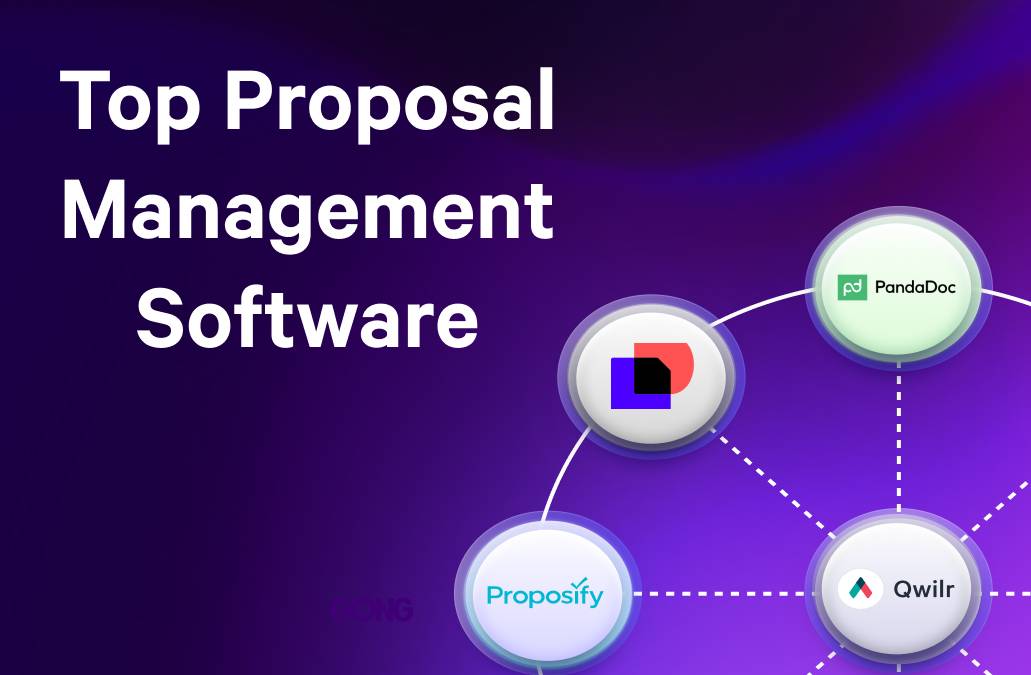Your sales tech stack can make or break your sales team’s effectiveness in the world of modern selling. Today’s sales teams are faced with challenges like less face-to-face time with prospects, complex sales motions, and long sales cycles. When you’re trying to close deals remotely, creating a compelling virtual buyer experience is paramount.
Get your tech stack right, and your sales team will be better equipped for success. Each sales rep’s effort will be multiplied. Sales velocity will increase, close rates will go up, and your buyer experience will be consistently exceptional.
Get it wrong, and your sales team will be frustrated and ineffective, constantly fighting an uphill battle to meet quota and hit revenue targets.
Choosing the right tools for your tech stack matters now more than ever. Increasingly complex sales processes create a need for a data-driven sales process—one that reliably delivers a great experience and outsized results.
What is a sales tech stack?
Simply put, a sales tech stack is the set of tools and technologies that your sales team uses to do its job. The tools and software in your sales tech stack enable team members to manage their sales processes and optimize their performance.
For sales professionals, the right set of tools typically means a far more efficient sales process. This saves your sales reps time, enabling them to contact more leads and have more sales conversations with prospects. It increases your sales velocity, which ultimately means more closed deals for your business.
The right sales tech stack also has a big impact on sales leaders. Using modern selling tools in smart ways will boost your team’s performance, accelerate revenue growth, and give you more clarity into where your process can be improved.
The benefits of a modern sales tech stack
The right sales technology stack can transform your sales department.
Without the right tools and systems in place, it’s hard to keep track of leads, manage customer relationships, and close deals. Sales can feel chaotic and disorganized. But introduce a well-designed tech stack and you’ll see your workflows get streamlined, repetitive sales tasks get automated, and your whole team begins pulling in the same direction.
The biggest impact of a modern sales tech stack is scalability. Using modern software that’s tightly integrated eliminates 'busy work' and frees up your team to focus on what they do best: selling your product. When your team can rely on technology to empower and equip them, you’ll find each team member is capable of delivering better sales results and more revenue for your business.
Some specific benefits of a modern sales tech stack include:
- Improved pipeline management. Track the progress of each lead and opportunity so you always know where they are in the buying process.
- Higher conversion rates. Effective proposal and demo tools help your sales reps demonstrate your value prop and close more deals.
- Better data hygiene. The right tools make it easy to track activity and maintain your customer data, helping sales leaders make informed decisions.
- Faster sales velocity. By automating tasks and keeping your team organized, a modern tech stack enables you to move more deals through your pipeline in the same amount of time.
- Increased collaboration and communication. Investing in the right tools helps your sales team collaborate more effectively—with other sales reps and with other internal teams, like Legal or Finance—to keep deals moving forward.
- Optimized sales processes: With the right tool stack you can iron out the kinks and gaps in your sales process, leading to higher sales efficiency and productivity.
Modern sales leaders who are strategic about sales and buyer enablement experience a similar transformation as Ford’s factories: faster and better results, with lower effort. By putting the right systems and tools in place, you’ll ultimately drive more predictable revenue on a consistent basis.
Key questions to consider before building your sales tech stack
1. What tools are in your existing tech stack?
Assess the tools already in place. Identify gaps and redundancies in your current tech stack and determine if these tools can be optimized, integrated, or if they should be replaced.
Talk to your team and get honest feedback about the tools that are useful for them, and those that have tons of shiny features but no real value. Use this opportunity to spring clean.
For a clearer vision of your ideal sales tech stack, try the 'blank page' exercise. Imagine building your tech stack from the ground up, free from current constraints. This creative approach helps you identify essential features and tools without being limited by existing systems. After designing this ideal setup, gradually reintegrate real-world considerations, comparing your ideal with the actual to pinpoint critical upgrades or changes. This balance between ideal and practical fosters strategic and efficient tech stack development.
2. What are your pain points and areas of friction?
There are tons of really cool software solutions out there that work to solve a range of problems in the sales process. The last thing you need is a tool that solves a problem that you don’t have, or one that creates an extra step in your workflow that you don’t need.
Identify the obstacles that your team and prospects are facing right now. Are manual proposals bogging your team down? Are there communication hiccups between prospects and sales reps? Is your pipeline a mess?
Once you zero in on the issues that are holding your team back, you’ll be able to find the tools to solve them.
3. Do you need tools that integrate with existing software?
Once you’ve optimized your existing sales tech stack and have landed on the must-keep existing tools, you’ll want to find new tools that integrate into your current tech stack and workflow.
Implementing new tools always comes with a learning curve and having those ready-to-go integrations makes all the difference.
4. Will these tools push the KPI needle?
The difference between a nice-to-have tool and a need-to-have tool is whether it’s going to actively contribute to your overall business goals. Estimating a solid ROI from implementing new tools is what will help you avoid clogging up your tech stack with frilly features.
5. What meaningful tasks can be automated?
In every sales team, there are repetitive manual tasks that need to be completed. Automating some of these tasks will contribute massive time-saving gains, reduce manual errors, and free your reps from the dreaded admin shackles.
That being said, these days it’s possible to automate almost everything. You need to identify where automation will have the highest impact—whether that be on saving time, improving customer experience, or providing more accurate forecasts and reports.
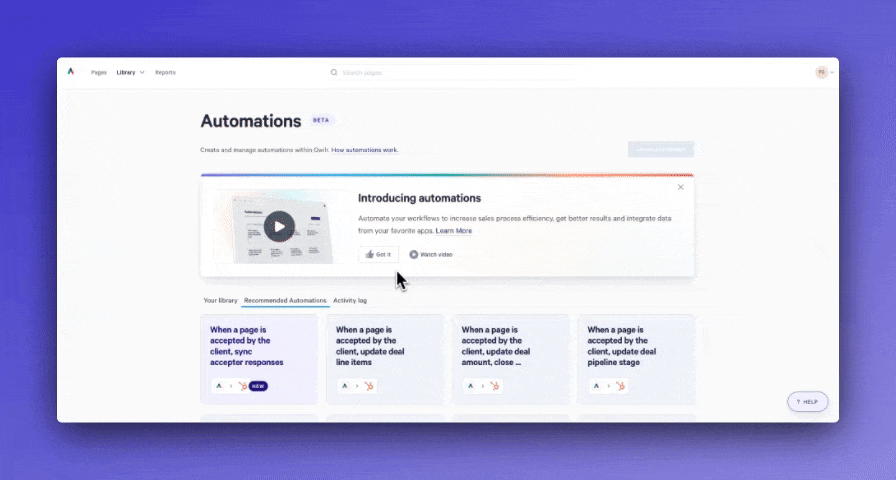
How to build a robust sales tech stack
You know what your objectives are and why having a solid sales tech stack is important, now here are the steps to making it a reality for your team.
Understand and align with business objectives
Begin with a comprehensive sales analysis of your business model, including the size, industry, products, services, and target audience. Engage with stakeholders across departments to ensure the tech stack supports the entire sales pipeline and aligns with the broader business goals.
Forecast future needs and scale accordingly
Anticipate the evolution of your business and sales processes. Understand how your needs might change as your business grows. Choose scalable solutions that can adapt to increasing demands and complexities, ensuring your tech stack is future-proof.
Prioritize essential features and plan deployment
Clearly define the 'must-have' and 'nice to have' capabilities based on the collective input from different teams. Prioritize these features and create a phased deployment roadmap. Implementing your tech stack in stages allows for smoother transitions and minimal disruption to your sales operations.
Invest in training and continuous improvement
Acknowledge the learning curve associated with new tools. Invest in comprehensive training programs to ensure your team can leverage the full potential of your tech stack. Embrace an iterative approach, continuously seeking feedback, and making improvements to adapt to the ever-evolving sales landscape.
By methodically addressing these key areas, you can construct a sales tech stack that not only elevates your current sales processes but also positions your team for sustained success and adaptability in the dynamic business environment.
The key components of an effective sales tech stack
A modern sales tech stack should automate as much of the sales process as possible. This helps each sales opportunity take less time, increasing the capacity of each team member while also decreasing manual errors.
The best sales tools enable a seamless sales experience for your buyers, while also reducing the effort required from your sales team.
We all know low-value leads have the potential to eat up a lot of time in the sales cycle. You want them to understand how your product solves their pain points. You want to educate them on how you can help. You want them to have a personalized experience.
But all things being equal, you’d probably prefer your sales team to invest their time and energy in the largest deals with the highest likelihood of closing.
With an incredible tech stack doing most of the heavy lifting, you can deliver a highly personalized, effective sales journey while spending a minimal amount of time.
The key components of this kind of sales tech stack will usually need to include applications from the following categories (at a minimum):
- Customer relationship management (CRM)
- Prospecting tools
- Sales productivity tools
- Sales intelligence software
- Scheduling tools
- Product demo and meeting tools
- Revenue platforms
We break down some of the best tools below. At Qwilr, we practice what we preach and we use a lot of these tools in our sales processes every day.
Customer relationship management (CRM)
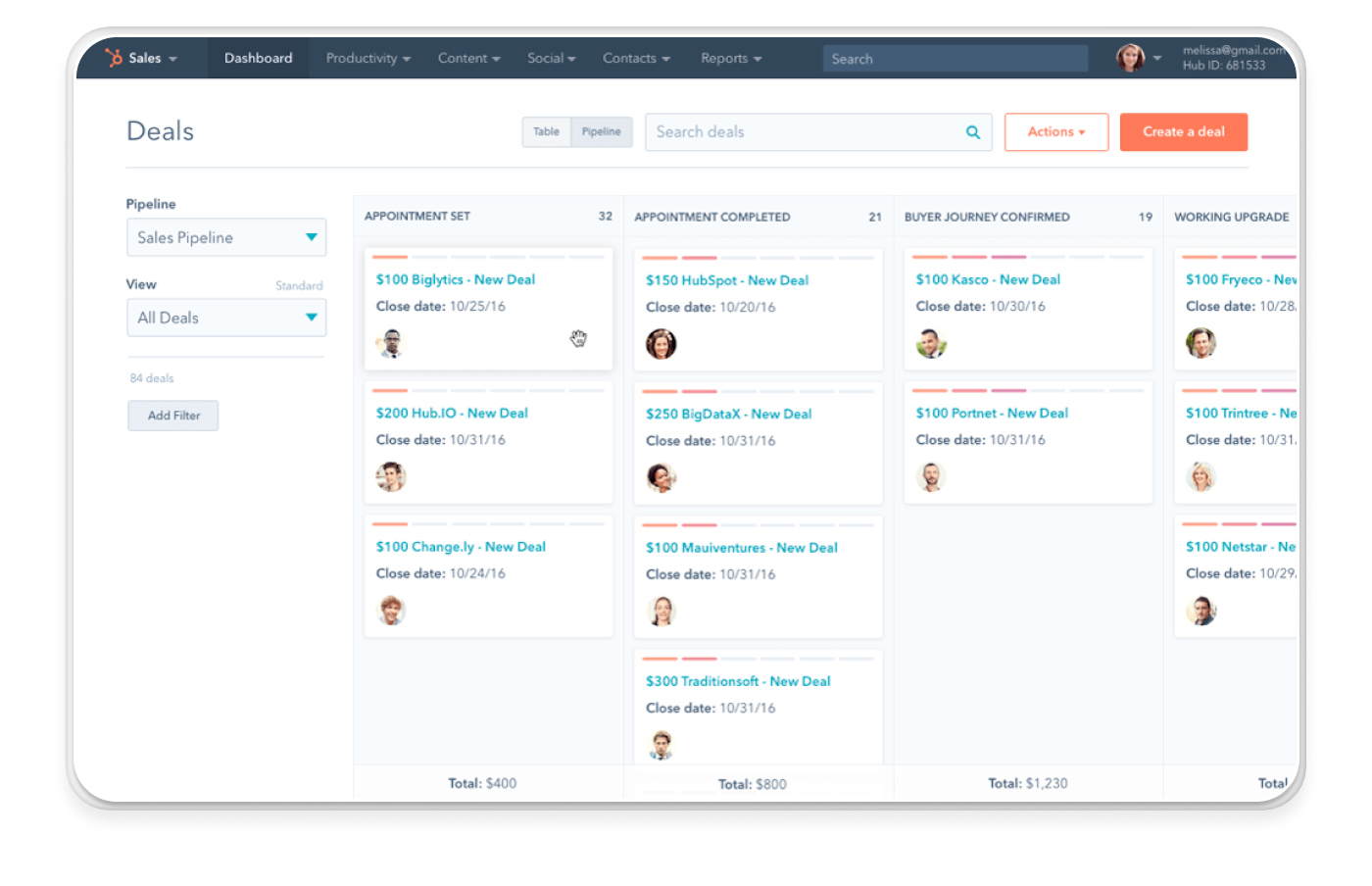
Your CRM impacts more than just your sales cycle—it’s how your business manages interactions with all customers, leads, and prospects.
A good CRM typically includes functionality like contact management, lead and sales tracking, sales pipeline management, and customer analytics.
CRMs are frequently used to store customer data and track customer interactions across different channels, but today’s best sales teams are also using them to automate key sales and marketing processes.
Some great choices of CRM include:
- HubSpot: HubSpot is an all-in-one CRM platform offering a comprehensive suite of tools for inbound marketing, sales, customer service, and content management. It is known for its user-friendly interface, powerful automation capabilities, and seamless integration with other tools, making it ideal for scaling businesses. At Qwilr, Hubspot is the foundation that our GTM team sits on and we rely on it to run smoothly at all times—which it does.
- Pipedrive: Pipedrive is a sales-focused CRM designed to help small and mid-sized teams manage leads and deals through an intuitive, visual pipeline. Its strength lies in its simplicity, offering customizable pipelines and automation features to streamline the sales process.
- Zoho CRM: Zoho CRM is a versatile and scalable customer relationship management platform that caters to businesses of all sizes, offering extensive customization, AI-powered insights, and multi-channel communication tools. It’s highly configurable and integrates well with other Zoho products and third-party apps.
- Salesforce: Salesforce is a robust cloud-based CRM platform that offers a wide array of tools for sales, customer service, marketing automation, and analytics. Known for its scalability and extensive customization options, Salesforce is suitable for enterprises seeking to manage complex sales processes and large customer databases.
- SPOTIO's field sales CRM: SPOTIO is a mobile-first CRM specifically designed for field sales teams, offering features like territory management, route planning, and lead tracking. It enhances productivity by providing real-time insights and automation for sales reps on the go.
Prospecting tools
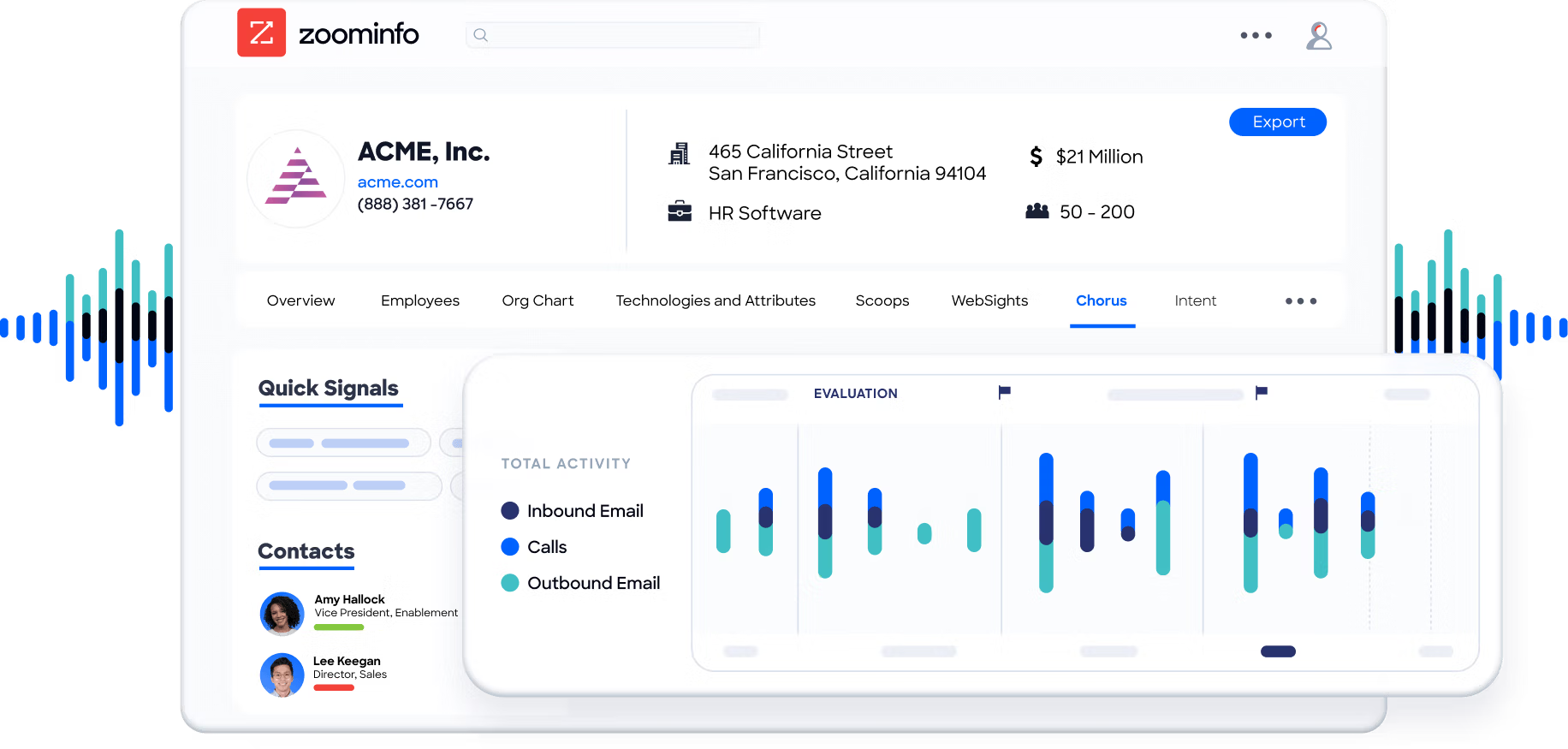
Prospecting tools are a foundational piece of the modern sales tech stack. These tools help your sales team find, learn about, and connect to your audience. They supply your teams with information about your prospects, both at the company and individual levels.
Many prospecting tools also include automation, often powered by generative AI like ChatGPT. This functionality can include things like generating outbound campaigns, automating LinkedIn connections and DMs, and automatically adding qualified leads to your CRM.
Great examples of modern prospecting tools include:
- ZoomInfo: ZoomInfo is a B2B intelligence platform that provides detailed company and contact data to support sales, marketing, and recruiting efforts. It features advanced data enrichment, lead generation, and prospecting tools, helping businesses identify decision-makers and streamline outreach efforts.
- Cognism: Cognism is a sales intelligence and lead generation platform that leverages AI and machine learning to provide accurate B2B contact data and insights. It specializes in GDPR-compliant prospecting, enabling sales teams to discover and target high-quality leads with real-time data.
- Plena: Plena is an automation platform that focuses on enhancing sales operations by automating repetitive, manual tasks such as lead management and data entry. Its goal is to increase efficiency and productivity for sales teams, freeing them up to focus on higher-value activities like customer engagement and closing deals.
Sales productivity tools
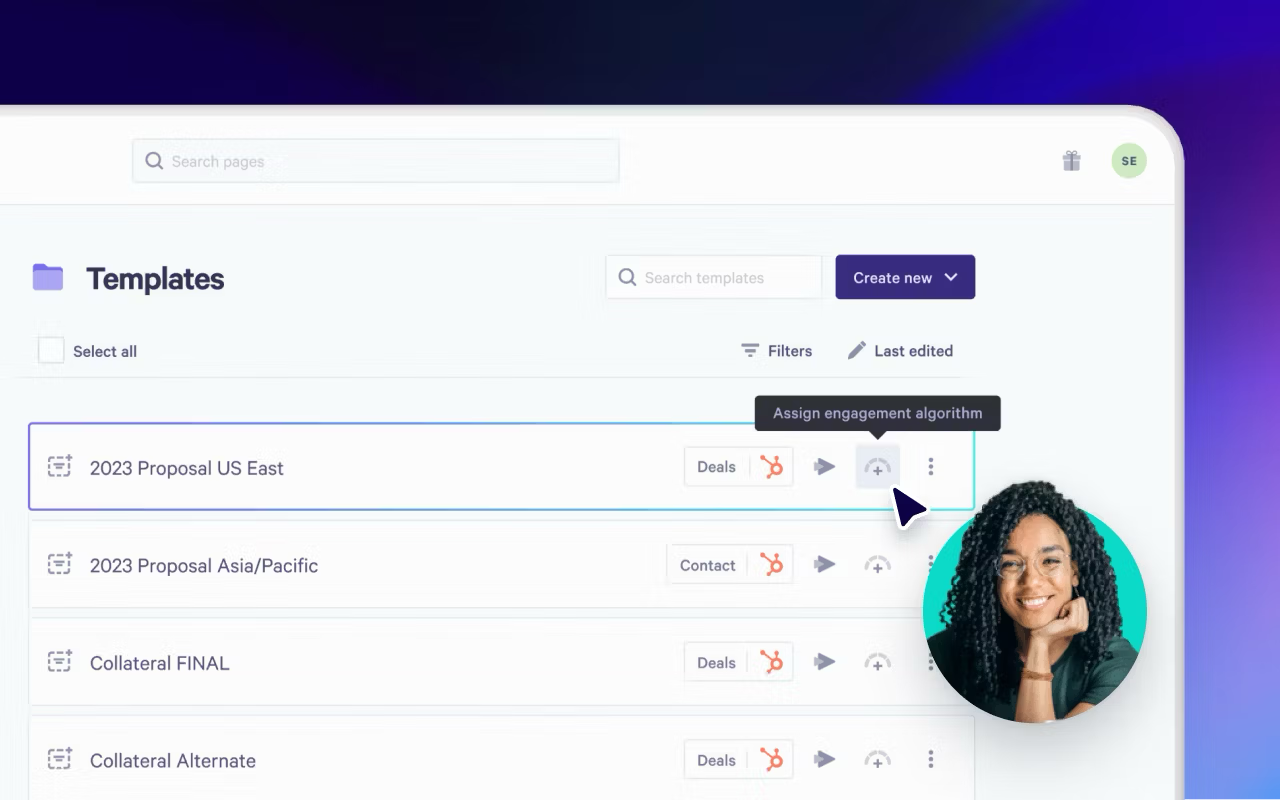
While sales productivity tools are a fairly broad category, the tools included here are essential for scaling up a modern sales team.
These tools offer a wide range of functionality, but they’re all aimed at the same thing: helping your sales team close deals more efficiently. They free up your sales reps so they aren’t spending all day on administrative tasks. They empower them with AI to accomplish more in less time.
A few examples of modern sales productivity tools include:
- Qwilr: Qwilr is a proposal and document creation tool designed to help sales teams create visually appealing, interactive, and mobile-friendly proposals, quotes, and reports. It allows users to track engagement, integrate with CRMs, and automate proposal workflows, making it easier to personalize content and close deals faster. Qwilr’s customizable proposal templates and interactive sales collateral close the gap between buyers and sellers, improving your sales velocity and giving your team actionable insights to work with.
- Dooly: Dooly’s wide range of features include everything from automated note-taking during sales calls to building out sales playbooks. It enables the easy creation of dashboards for improved visibility into your pipeline, giving sales reps a real-time look at every deal they’re working.
- Lavender: Lavender bills itself as the best AI-powered sales email coach on the market. Its powerful AI enables sales teams to write better emails, faster. The impact is big: more time to sell, higher close rates, and a constantly learning sales team.
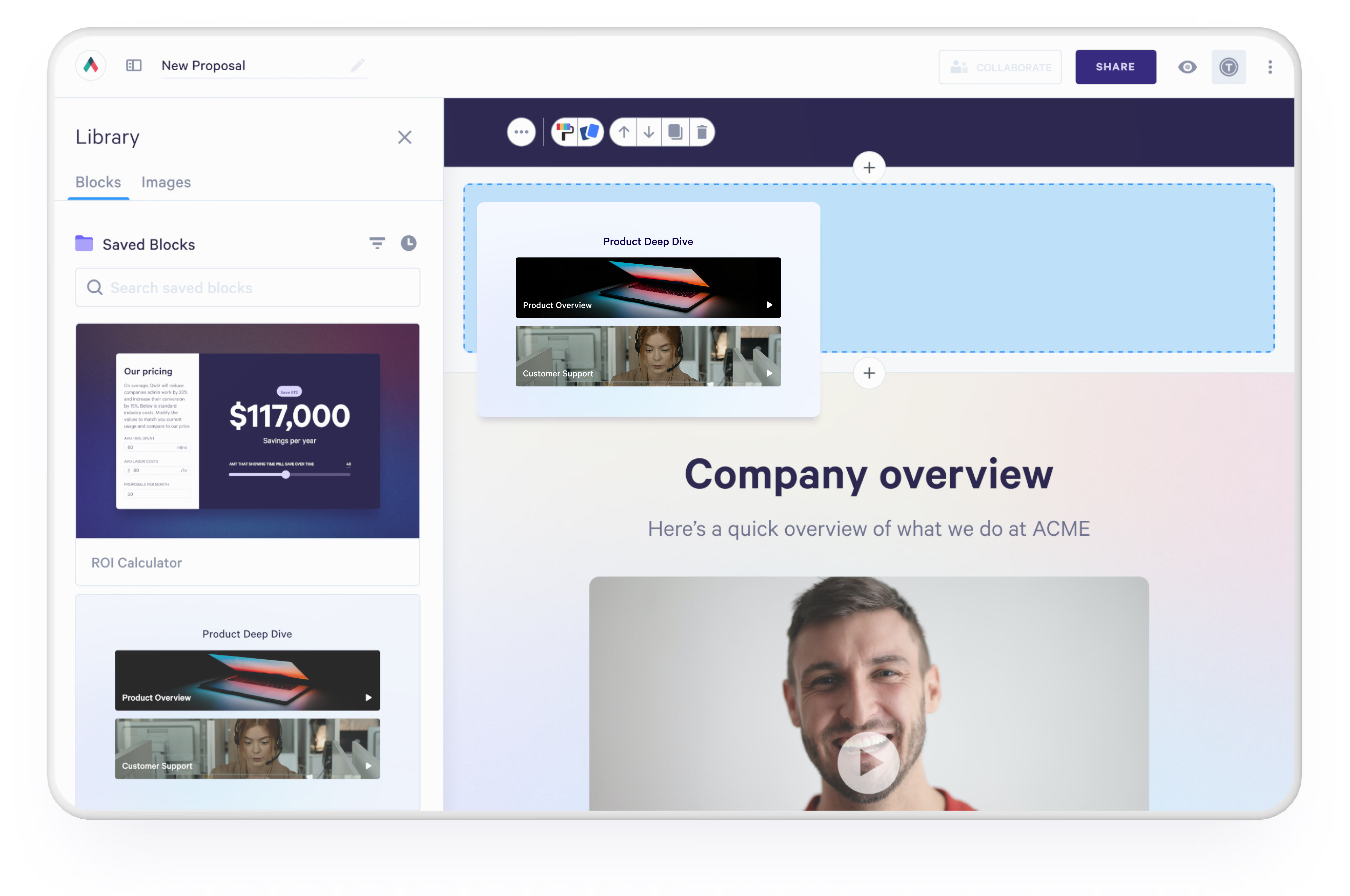
Sales intelligence apps
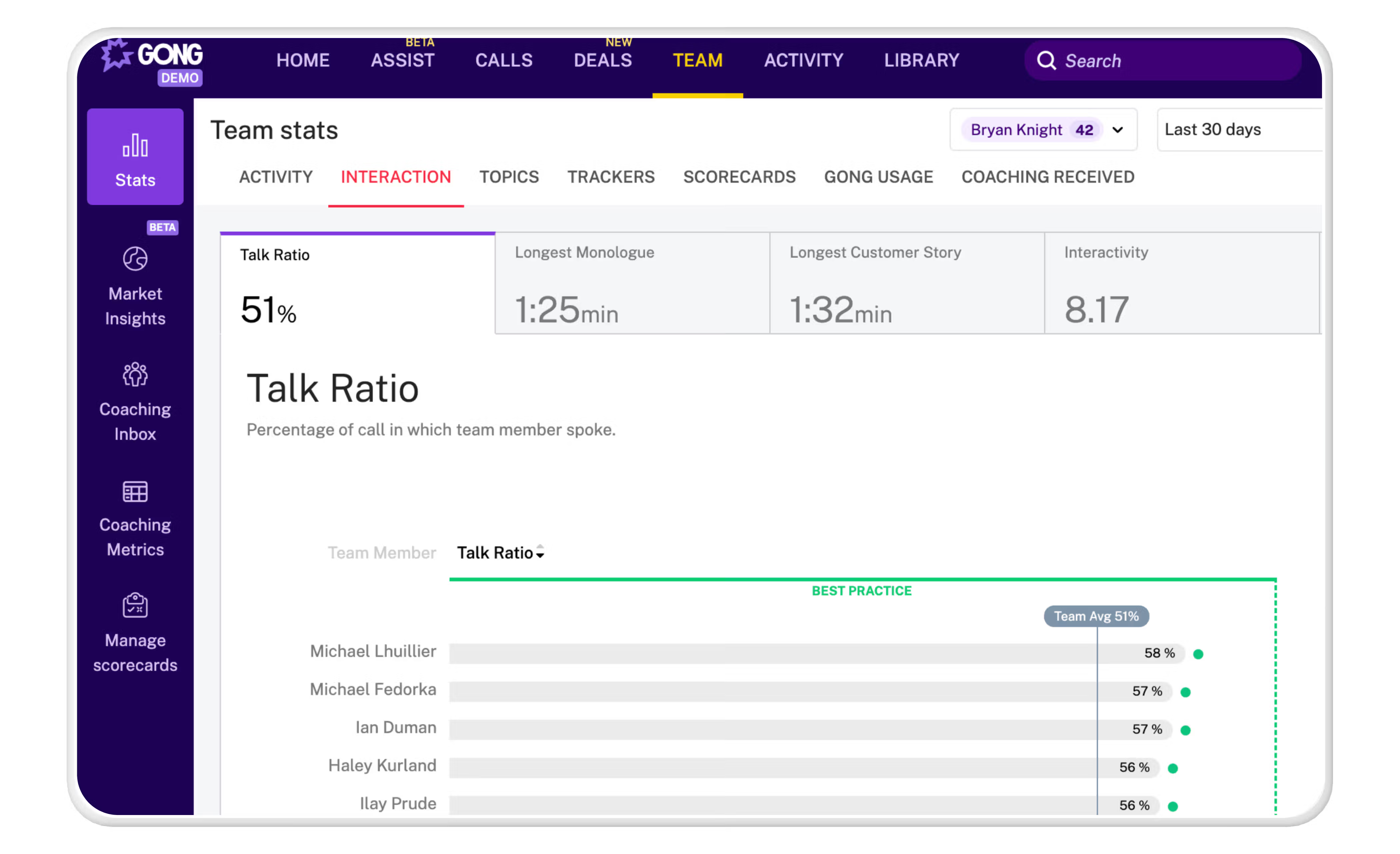
Sales intelligence tools provide insights and data to help sales teams make informed decisions and improve their sales performance. These tools gather data from a variety of sources and use smart analysis to identify trends and extract learnings. Modern sales intelligence tools are powered by cutting-edge AI, making them far more effective at uncovering insights and driving improvements in your sales team’s performance.
Sales intelligence software can uncover information on prospect demographics, buyer behavior, and market trends, allowing sales teams to better target their efforts and tailor their messaging. By providing real-time insights and analytics, these tools can also help your team identify new opportunities, prioritize leads, and close deals faster.
Some great choices of sales intelligence software are:
- Gong: Gong captures and analyzes sales conversations to provide insights into customer interactions. By leveraging AI, Gong helps sales teams improve performance, identify deal risks, and optimize their approach based on data-driven feedback from recorded calls and emails. We use Gong to learn from our sales calls and deeply understand our ICP
- LinkedIn Sales Navigator: LinkedIn Sales Navigator is a sales tool that helps users find, connect, and build relationships with potential leads through LinkedIn's vast professional network. It offers advanced search filters, lead recommendations, and real-time updates on key accounts, making it easier for sales teams to engage the right prospects.
- Outreach: Outreach streamlines communication between sales teams and prospects by automating email sequences, calls, and follow-ups. It provides detailed analytics, AI-driven insights, and integration with CRM tools, helping sales reps engage leads more efficiently and close deals faster.
- ZoomInfo SalesOS: ZoomInfo SalesOS is a comprehensive sales intelligence platform that provides in-depth company and contact data to fuel lead generation, sales prospecting, and account-based marketing. It combines data enrichment with powerful prospecting tools to help sales teams target key decision-makers and engage more effectively
Scheduling tools
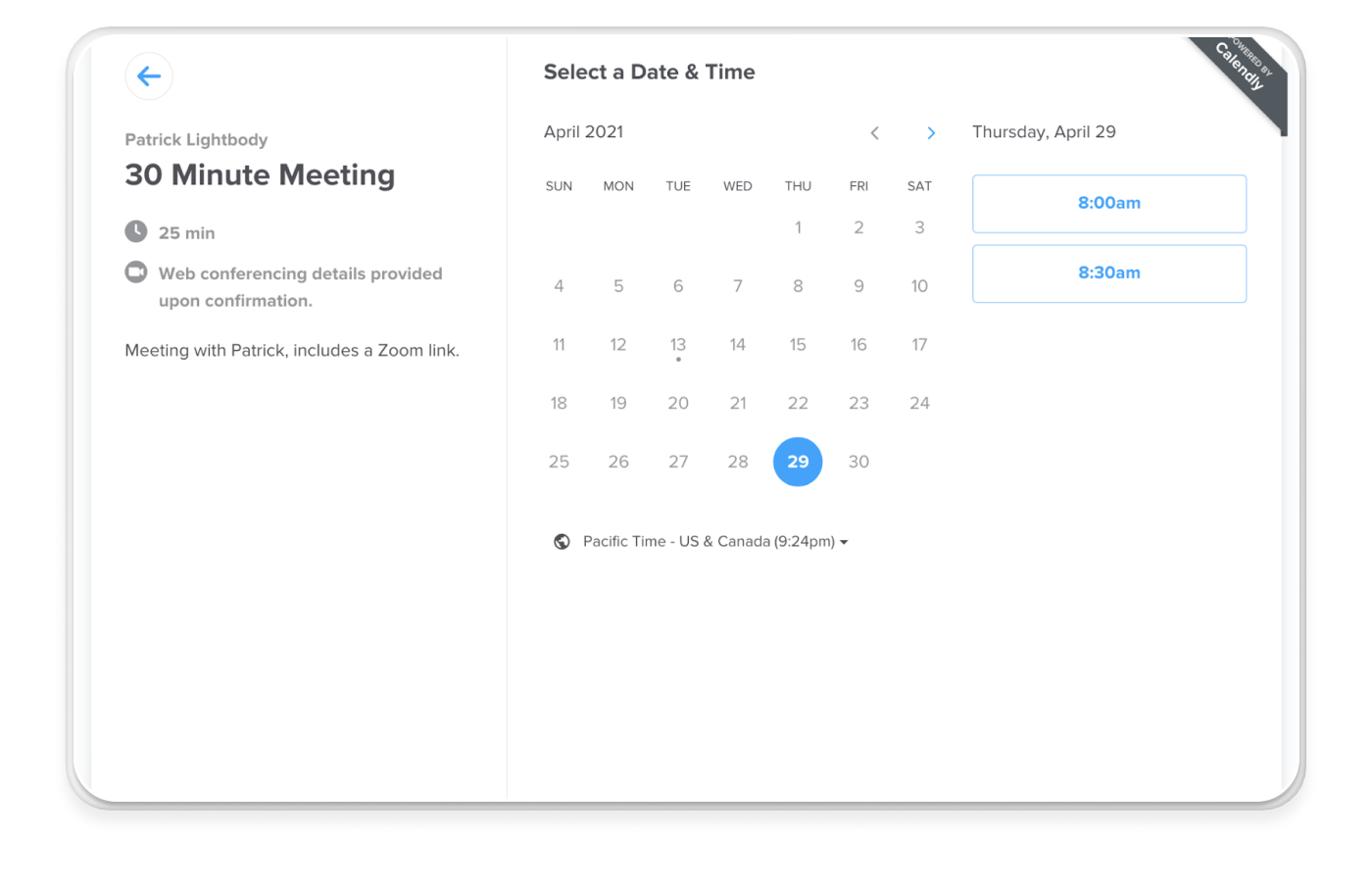
The art of sales includes meetings, phone calls, and communications galore. Good scheduling software allows others to see when your team is available and book appointments. Make sure whatever you choose can integrate with your sales reps’ individual calendars. This prevents prospects from booking appointments when your team is unavailable.
Great scheduling tools include:
- Calendly: Calendly simplifies the process of setting up meetings by allowing users to share their availability and let others book time slots that work for them. It integrates with various calendars and platforms, helping sales teams and professionals reduce back-and-forth emails and improve meeting efficiency.
- Chili Piper: Chili Piper is a scheduling and routing tool designed specifically for sales teams to book meetings with leads and prospects instantly. It automates the process of booking meetings, qualifying leads, and assigning them to the right sales reps, optimizing the speed and efficiency of the sales pipeline. We’re big fans of Chili Piper at Qwilr and our sales reps rave about how effective the tool is.
- AcuityScheduling: Acuity Scheduling is an online appointment scheduling tool that allows businesses to manage bookings, automate reminders, and sync with calendars. It’s particularly suited for service-based businesses and offers extensive customization options, including client self-scheduling, payments, and intake forms.
If you’re a small team, trying to keep costs down, consider choosing a CRM that includes this functionality, such as HubSpot or Zoho CRM.
Product demo and meeting software

If you’re selling technology or software of any kind, chances are you’ll need virtual meeting software. Nothing beats a face-to-face conversation where you can see a prospect’s expressions and tailor your pitch accordingly.
Virtual meetings and demos can happen on tools that we’re all familiar with, like Zoom or Google Meet. Modern sales teams supplement these basic meeting platforms with tools like the Gong App for Zoom, which records, transcribes, and analyzes your conversations with prospects. Chorus.ai and SalesLoft Conversations are similar tools, each offering unique features to help train your sales team and improve performance.
For a more interactive demo experience, you might want to check out a tool like Storylane. Storylane empowers go-to-market teams by enabling the creation of personalized, live website demos, ensuring that sales meetings are with qualified leads and aiding demand generation teams in driving increased volume.
Alternatively, Navattic enables you to build fully interactive, guided product walkthroughs without needing to ship new code—letting prospects explore features hands-on while your team captures engagement analytics and conversion signals.
RevOps platforms
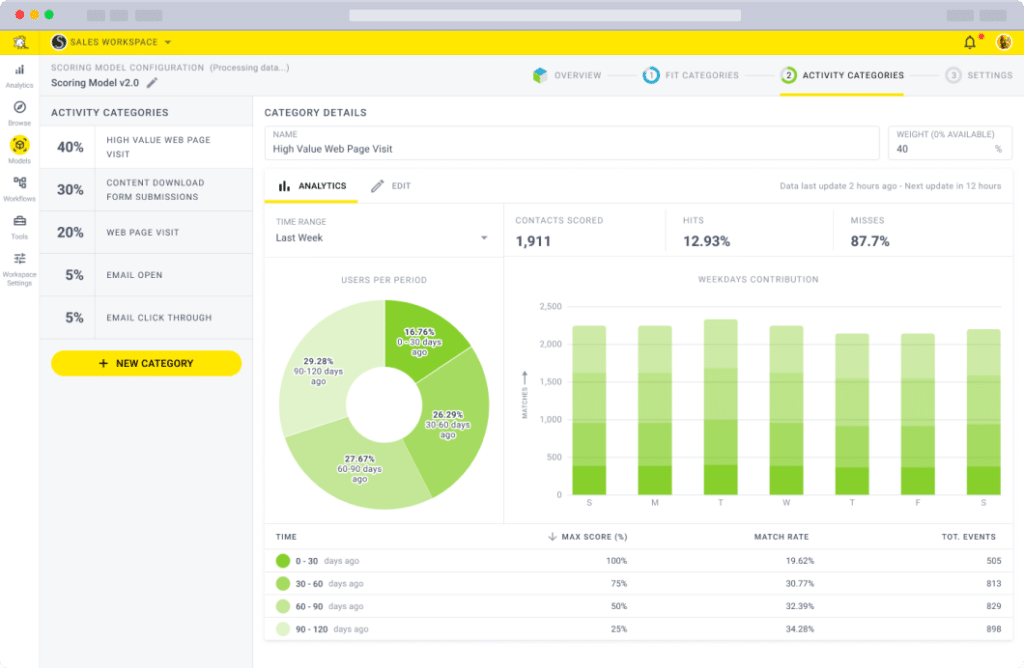
Revenue operations—or RevOps—is a quick-growing function across most businesses today. And while RevOps tools can include a lot of the functionality mentioned in the above categories, these tools are important enough to modern sales teams to get a direct shout out.
Similar to sales productivity tools, revenue operations software covers a wide spectrum of functionality, all focused on one thing: maximizing your organization’s revenue. Examples include:
- Breadcrumbs: AI-powered lead scoring and insights that help you uncover additional sales opportunities.
- InsightSquared: InsightSquared is a powerful sales forecasting and analytics tool, empowering your RevOps team with improved visibility into your sales performance.
- Revenue.io: This sales enablement platform uses AI to provide real-time coaching and recommend next steps to your sales team. It cuts through the noise—the thousands of things your team could do—to help them understand what they should do to have the biggest impact.
And while it’s not glamorous, your sales tech stack needs to include tools that enable you to send invoices and accept and record payments. This functionality blurs the lines between Sales and Finance, but without it your team is dead in the water. Some well-known tools to make this happen include Stripe, Square, FastSpring, and Quickbooks.
Additional considerations for larger sales teams
The components of your stack will depend on the needs and goals of your specific organization. That means factors like the size of your team and the complexity of sales motion will also impact your sales tools.
If you’re running a larger team, you may find it valuable to include some other tools in your tech stack—tools that are really only ‘nice-to-haves’ for smaller sales teams.
Account planning tools
Long gone are the days of selling to a single buyer—in the modern world, your sales reps need to approach entire buying teams to secure deals. But it’s hard enough to remember which cousins belong to which aunts at your own family reunion, never mind recalling the names and roles of 20 different people at 50 different companies that you’re trying to sell to.
That’s where an account planning tool comes in handy. Software like DemandFarm and Prolifiq can help your reps make sense of the hierarchy and relationships at prospect companies, while also shedding light on market challenges and opportunities. You can also leverage tools like Lucidchart, Creatly, and SmartDraw, to create your own flexible org charts for planning how you’ll approach certain accounts.
These tools help you better understand the needs of each player on a buying team, enabling you to tailor your approach accordingly.
Contract management software
Creating, tracking, and managing contracts can get overwhelming—and can be a major time suck. It’s especially challenging when there are numerous people involved in the process, as you’ll often encounter when selling to enterprise organizations.
Larger teams deal with greater contract volumes, and high-value deals tend to lead to more complex contractual terms. A contract management tool like Malbek or Gatekeeper helps you manage the entire lifecycle of a contract, from creation and negotiation to signature and renewal. Robust contract management software helps your team close deals faster, reduces errors, and ensures compliance with legal and regulatory requirements.
Key features to look for when choosing software for your tech stack
Look out for sales tech that:
- Provide seamless data sharing
- Offer intuitive interfaces, onboarding, and training
- Include data analytics and reporting
- Provide customization options
- Meet industry standards for data security and privacy
- Support mobile access
Seamlessly integrate Qwilr into your sales workflow
Implementing the right sales tech stack can significantly impact the success of your sales team (and your business as a whole). Whether you’re a small start-up or a large enterprise, leveraging the power of modern sales enablement tools like Qwilr and HubSpot transforms your sales processes, improves productivity, and provides a superior buyer experience.
If you’re ready to build or evolve your sales tech stack, you can check out a free trial of Qwilr right here.
About the author

Sarah Taylor|Senior Content Marketing Manager
Sarah leads Qwilr's content marketing efforts – specialising in field marketing, campaign planning, content, brand and communications. Sarah has both agency and global corporate experience spanning Australia, Asia and the UK.
FAQs
Determining the optimal number of tools in your sales tech stack isn't a one-size-fits-all situation. It hinges significantly on factors like your business size, the complexity of your sales processes, and the specific challenges your sales team faces. Generally, a more extensive team with diverse roles might require a broader set of tools, while a smaller, more focused team could operate efficiently with a leaner stack.
For instance, a small startup with a sales team of around 10 might thrive with a compact tech stack consisting of essential tools for CRM, communication, and prospecting. In contrast, a larger enterprise with, say, 50 or more sellers, might need a more comprehensive stack. This could include advanced CRM systems, sales intelligence platforms, dedicated prospecting tools, contract management systems, and sophisticated AI tools to cater to the varied needs and roles within the team.
The key is to ensure that every tool in your tech stack is purposefully chosen for addressing specific needs, promoting efficiency and collaboration, and offering scalability and seamless integration to streamline your sales process.


